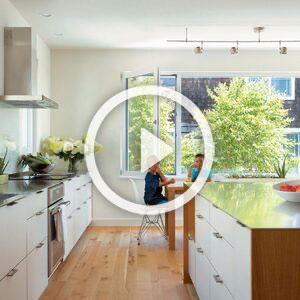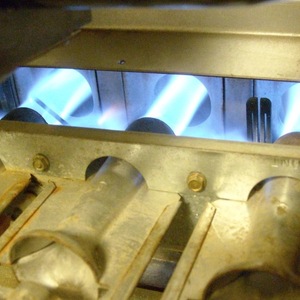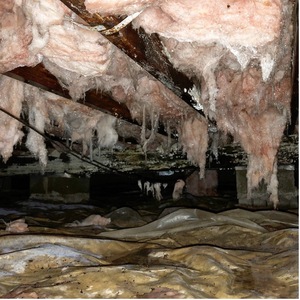
It’s a beautiful spring day in Upstate New York. The trees have nearly finished leafing out, and lilacs are in full bloom. On days like this, it’s tempting to pretend that the climate isn’t changing that fast. But a glance at the last few weeks’ headlines shatters that daydream. Temperatures hit 50°C (122°F) in parts of India and Pakistan. In Texas, an early-season heat wave arrived while six power plants were offline, prompting calls to curb air conditioning use. In New Mexico, the Calf Canyon/Hermits Peak Fire grew to consume over 300,000 acres. Atmospheric carbon dioxide (CO2) measured at the Mauna Loa Observatory set a record, exceeding 420 parts per million (ppm) for the first time. And a new report from the World Meteorological Association estimates a nearly 50% chance that average global temperatures will pass the 1.5°C (2.7°F) warming threshold at least once in the next five years.
Climate change is here, and it will intensify over the next few decades. Its effects will be felt in all sectors of our society, from agriculture to transportation, infrastructure, and even sports. Much of our work as green builders is aimed at mitigating climate change: designing, building, and retrofitting structures for low energy use, powering them with renewable, low-carbon electricity, and selecting materials with low embodied carbon and low global warming potential.
But given the changes we are already seeing, and the ones predicted for the near future, we also need to think about adaptation. How do we make sure our buildings remain comfortable, durable, and healthy in a changing world? I suspect this will emerge as a central theme in green building over the next few decades. In this article, I explore ways in which climate change is affecting indoor air quality (IAQ) and strategies we can employ to…
Weekly Newsletter
Get building science and energy efficiency advice, plus special offers, in your inbox.

This article is only available to GBA Prime Members
Sign up for a free trial and get instant access to this article as well as GBA’s complete library of premium articles and construction details.
Start Free TrialAlready a member? Log in












3 Comments
This is a great overview. A couple of thoughts
> It takes significantly more outdoor air to maintain this indoor level now than it would have in 1980, when CO2 concentrations were 339 ppm.
It seems like this should be the easiest of the problems we have to solve though, since the biggest factor in high indoor CO2 is humans and combustion appliances. If it ever gets to the point that opening windows (or cranking up the HRV/ERV for those who have them) is insufficient, then civilization will have long since ended.
Also, when talking with people about IAQ, I encounter quite a bit of skepticism that it is actually a problem, with some suggesting that taking steps to improving IAQ is tantamount to coddling the immune system.
In the western parts of the country, this is starting to shift as people start to pay attention to IAQ during wildfires, but even then people don't make the connection to the IAQ issues that are created by their own homes.
In all areas, IAQ is pretty correlated to income, with the wealthier living in newer, larger homes farther away from factory emissions, with fewer people per cubic foot of indoor air since it's usually only one family living in a house. Imagine a gas or propane stove running frequently to cook for a joint family of 8 in a small house.
This is all to say that the IAQ has a multiplicity of dimensions, but it's quite a challenge to get people to even believe it's a problem in the first place, much less consider solutions. Contractors are in a weird position because they might be perceived as pushing snake oil solutions for a problem that people don't think exists, and trust is already low between contractors and customers.
If these are real issues, we need trusted health institutions to add their voices to the chorus in unison, or give people the tools to fix these issues themselves. An great example of this is the box fan furnace filter air purifier designs making their rounds on the Internet.
This is such a thoughtful response to Jon's article, Dan. I appreciate your point about giving people tools. It's one of the reasons I value the contributions Allison Bailes makes to GBA--he clearly explains a problem and always provides a solid solution. In fact, he wrote about the box fan air purifier you mention here: Improving Indoor Air With a DIY Portable Air Cleaner. It’s such a practical, affordable, and approachable solution. We need more of those.
Yes, thank you Dan, these are great points. I agree, it is hard to get many people to take IAQ seriously. And yet asthma and other IAQ-related illnesses have a huge cost, both to individual wellbeing and to society at large. As you mention, these impacts fall disproportionately on lower-income folks. In the last few years, I have seen some signs that the energy efficiency and public health communities are starting to explore more collaboration. I think there is some real potential for win-wins here.
Part of the challenge is making the invisible visible. This is why I'm really excited about affordable IAQ monitors. Giving people real-time feedback on particulates, VOCs, CO2 and moisture in their homes helps them make connections between their activities, their health, and their air quality. It can also help overcome the trust gap you mention.
Log in or become a member to post a comment.
Sign up Log in